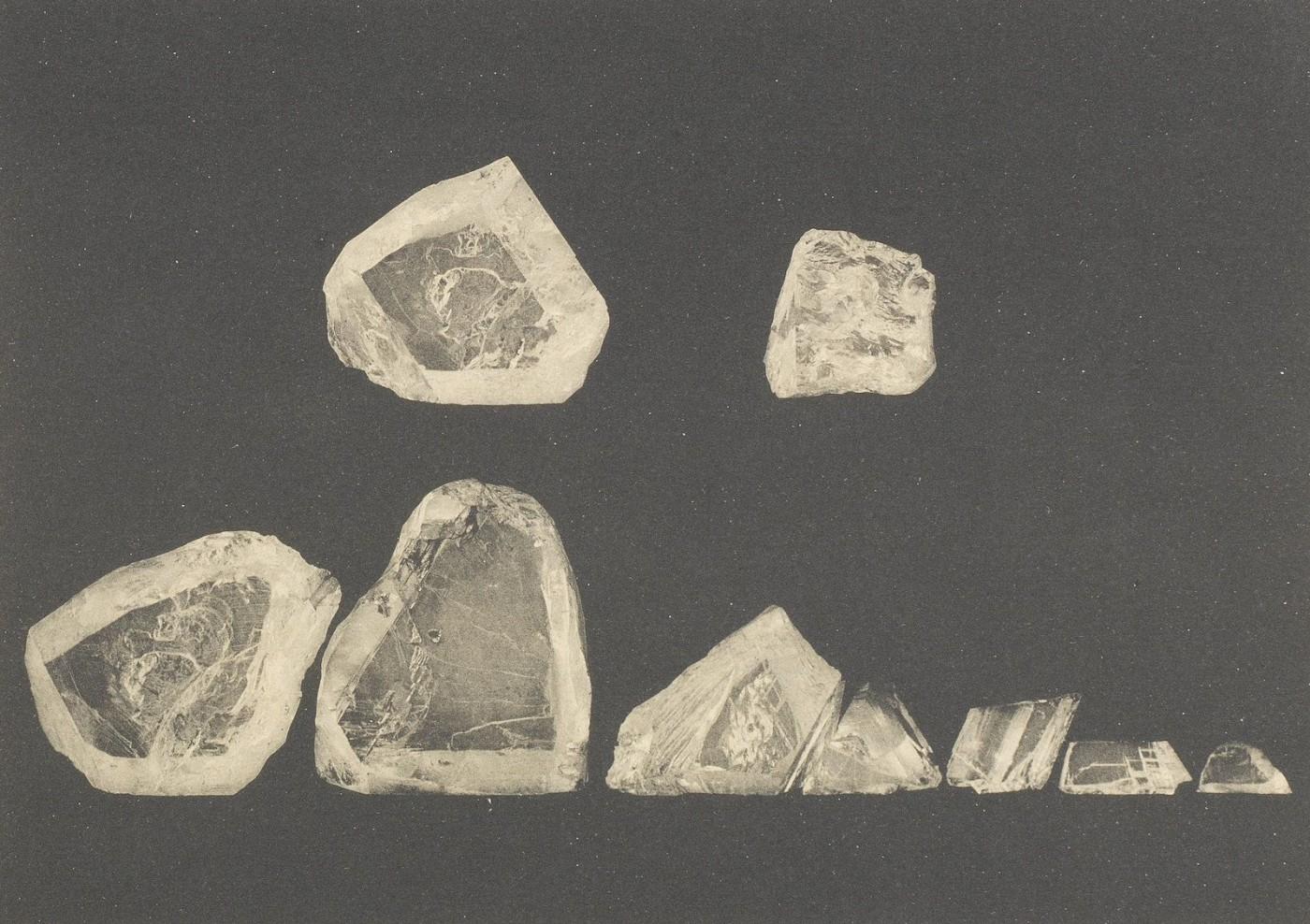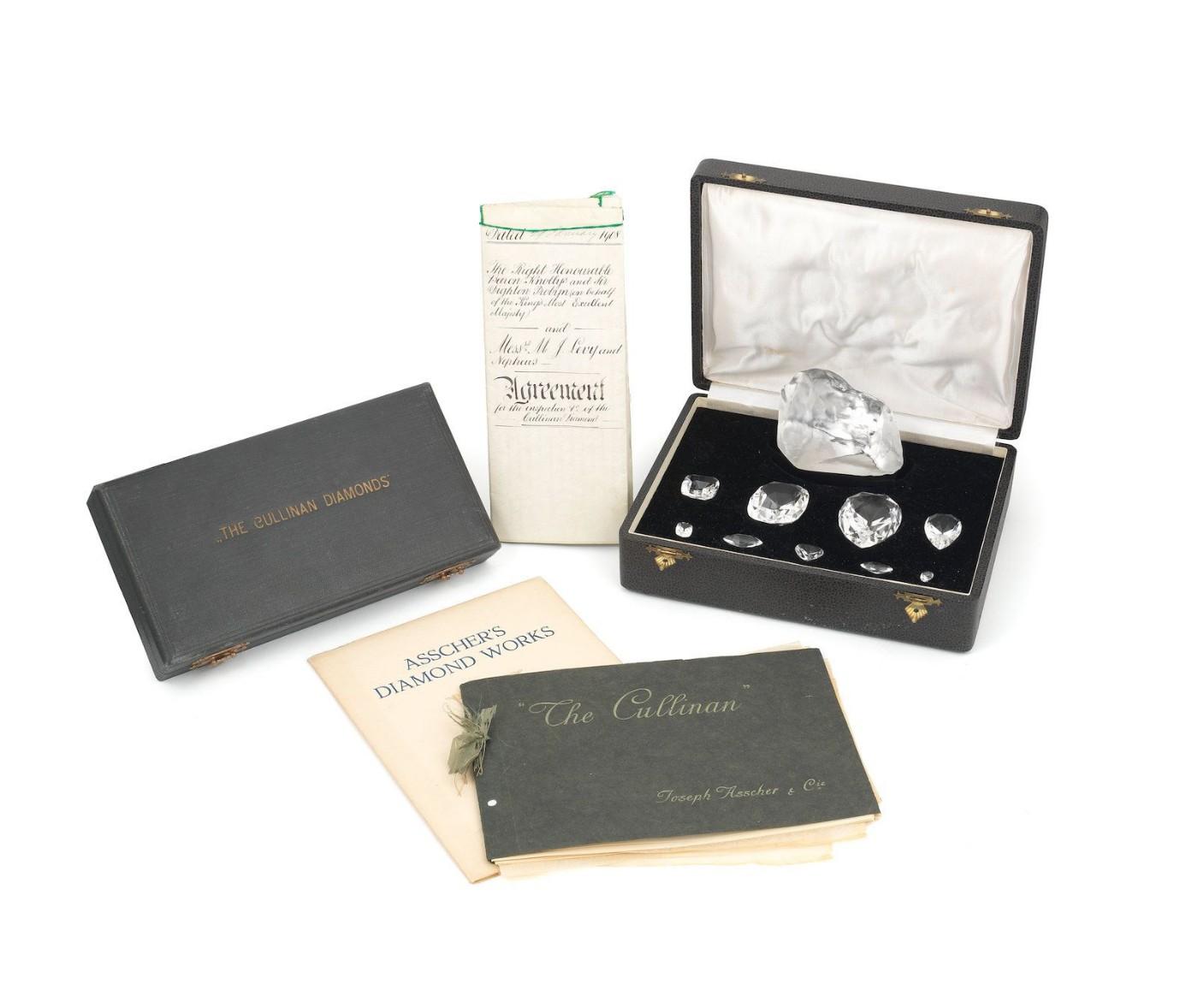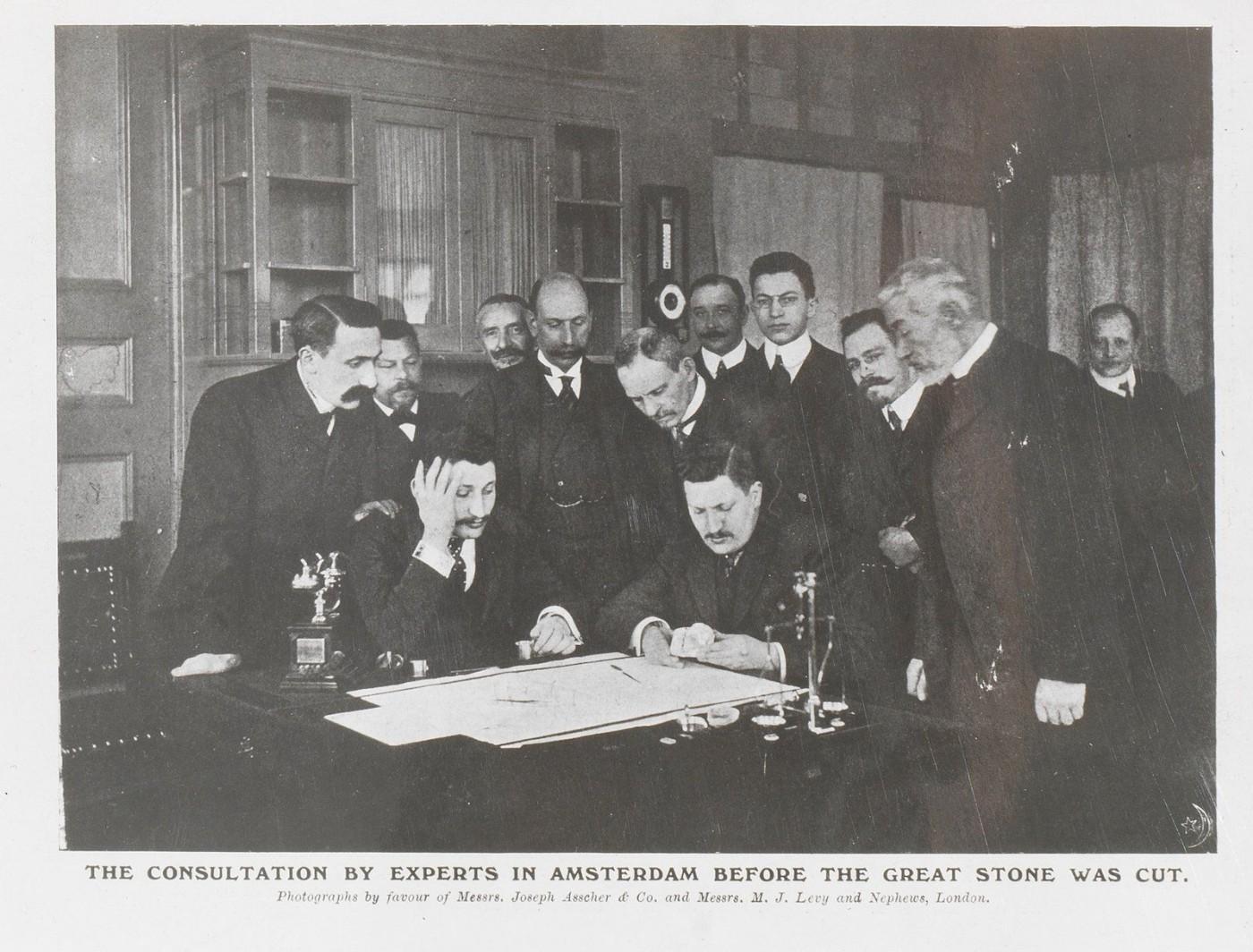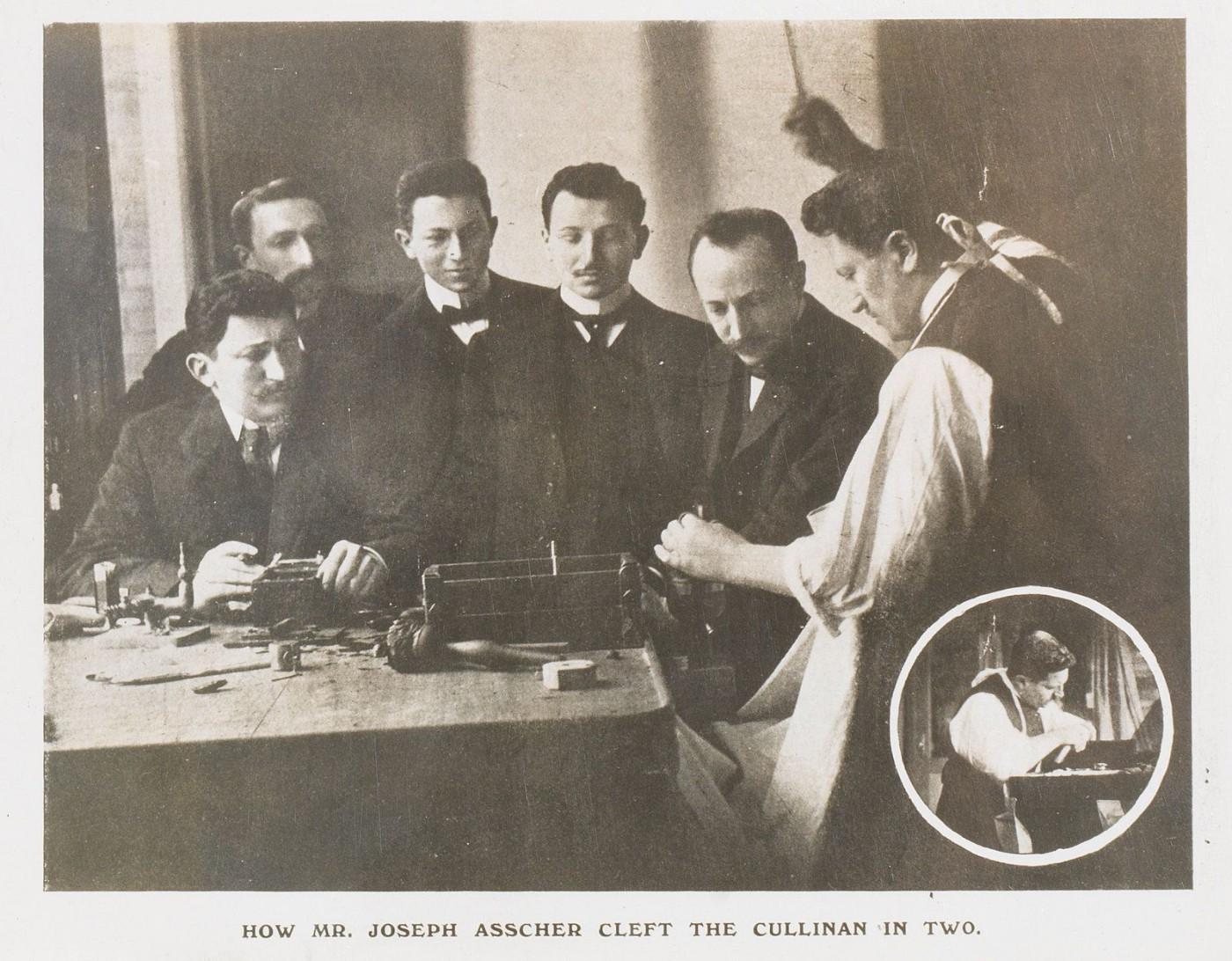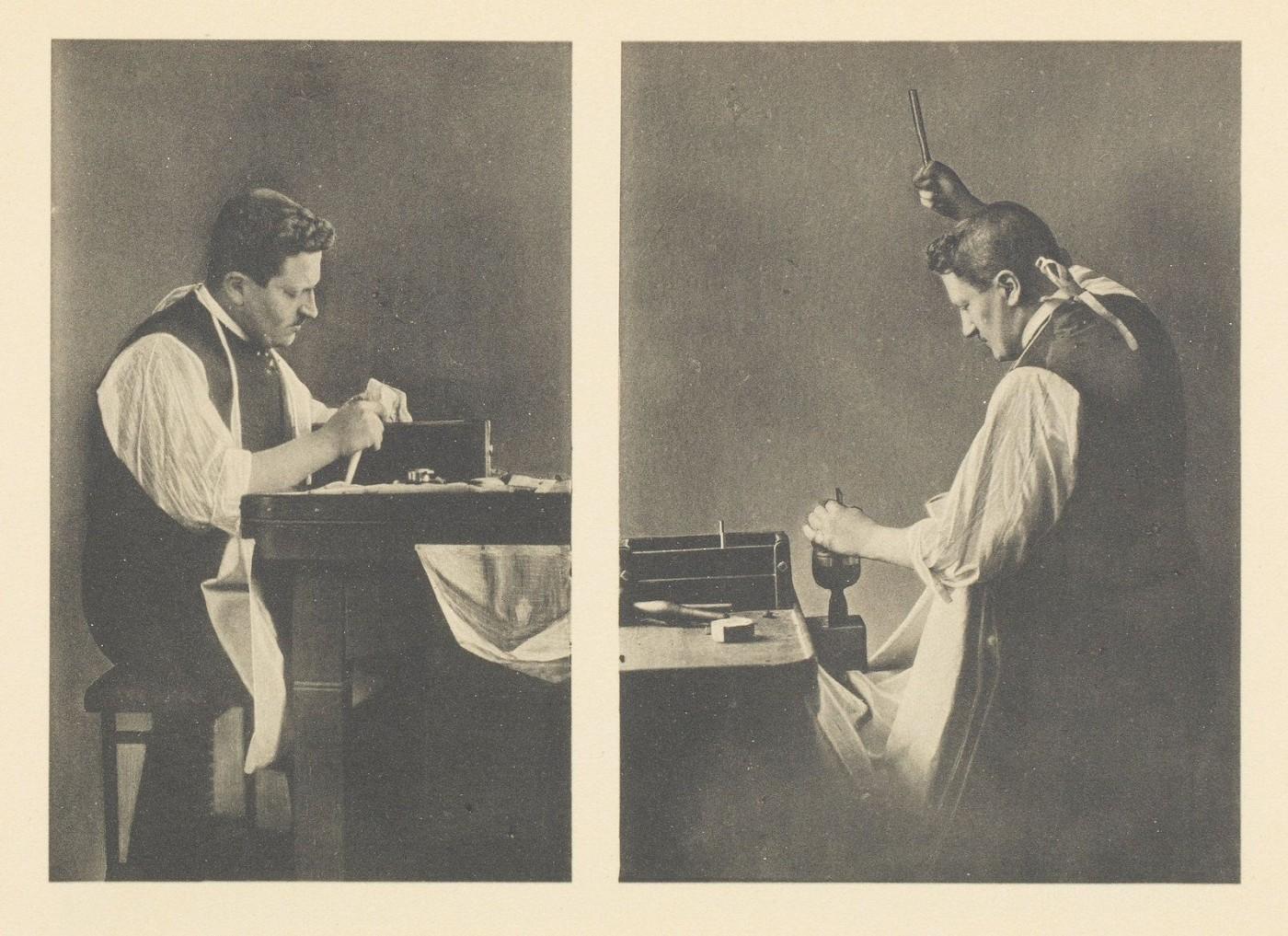The singularity of the diamond emanates from its astonishing size and weight: 3,106 carats, measuring roughly 4” x 2”. It was named for Thomas Cullinan, chairman of the Premier mine. More than a century later, the mine was renamed the Cullinan, recognizing his role in its discovery. Ironically, the enormous size of the diamond made it virtually unsalable to the diamond trade. It was sold to the government of the South African Transvaal Colony, which then presented it as a gift to King Edward VII on his 66th birthday.
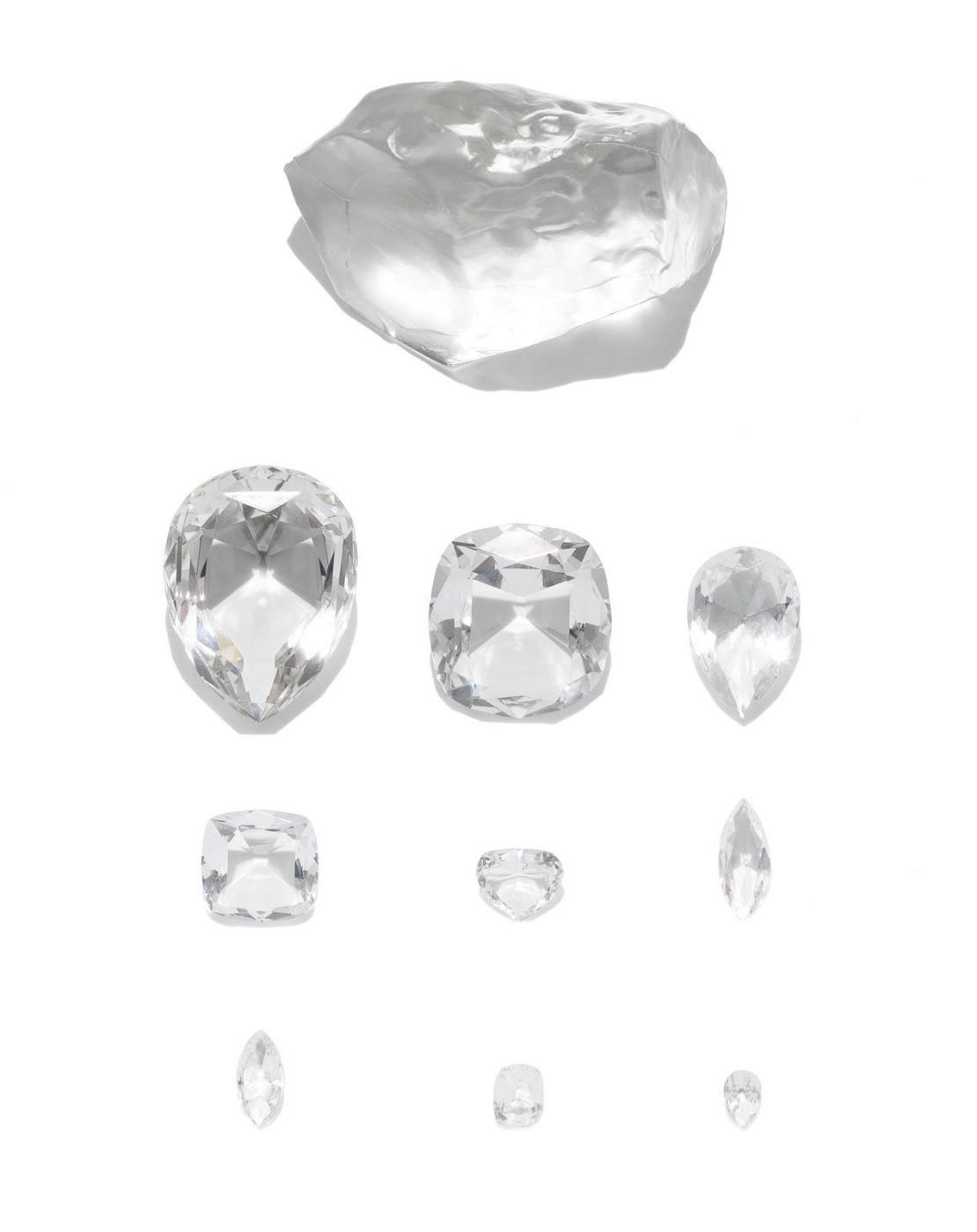
Replica set of the Cullinan diamonds
The history of the cutting of the Cullinan diamond, the largest gem-quality stone ever found, is captured in documents being offered at Bonhams London on April 30, 2019. Every aspect of the extraordinary diamond’s journey from the Premier mine in South Africa where it was discovered, to its association with the royal family of England, to its cutting, are laid out in the agreement made on January 29, 1908 between the representatives of King Edward VII and diamond brokers M.J Levy & Nephews in London, and accompanying photographs.
In addition to the legal agreement, the lot includes a paste replica of the Cullinan diamond in its original rough form, as well as two replica sets of the nine principal diamonds that form part of the Crown Jewels of Great Britain and Queen Elizabeth II. The lot has a presale estimate of $2,600 to $3,900 (GBP 2,000-3,000). The M.J Levy name is little known but the firm that cut the diamond, Asscher of Amsterdam, has enjoyed a well-earned connection to the diamond since it was trusted with its cutting in 1908.
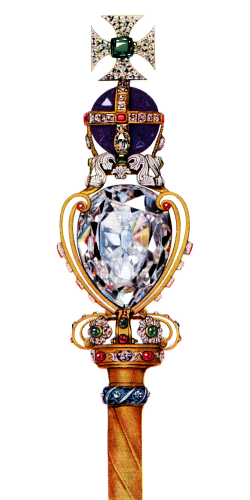
Sovereign's Sceptre with Cross, featuring Cullinan I
The lot on offer at Bonham’s includes photographs of the cutting of the diamond as well as the lengthy process involved in studying the stone and deciding how to cut it. The best-known aspect of the shaping of the diamond centers around Joseph Asscher who was chosen to cleave the rough. Although diamond is the hardest mineral known, it has cleavage grains. This allows diamantaires to break the diamond along one of these planes. This is a make-or-break moment; one wrong tap and the valuable stone turns into a pile of diamond dust.
After considerable study, the moment was at hand. After one failed attempt, the rough was cleaved into two parts weighing 1,977 carats and 1,040 carats. Only then was the firm able to design the size and shape of the nine stones that were ultimately taken from the rough. The two largest are Cullinan I, a pear-shape weighing 530.20 carats, now set into the Sovereign Scepter, and the cushion-shaped Cullinan II, 317.40 carats, set at the front of the Imperial State Crown. Cullinan I retains its position as the largest white diamond ever cut.
The other stones, ranging from 94.40 carats down to 4.39 carats, make up various elements of the British crown jewels.




